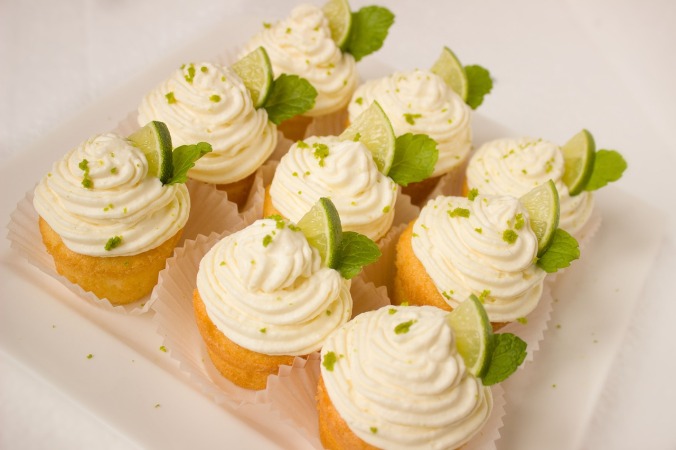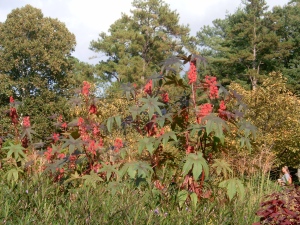On a recent trip to Spain we enjoyed an adventurous meal in a Basque tavern where we were introduced to Pintxos–the special Basque version of tapas–northwest Iberian finger-food. These culinary mini-sculptures bring together the most unexpected combination of foods and flavors. Each one is a creative work of edible art, visually and deliciously pleasing, handy for a pick-me-up meal or a many-course dinner.
Tia Marta here to share ways I’ve adapted these traditional Basque food creations, incorporating our local Baja Arizona ingredients. Pintxos (pronounced peent’shows) are fun to make. They let your creativity take off. The endearing individual servings make a pretty presentation. Bringing a tray of pintxos to the dinner table makes for some drama too. Your guests’ curiosity is piqued to find out what interesting delicacies make up each pintxo. All eyes are focused, tastebuds on alert. The eating pace slows down to savor-mode as each bite is tested—like sipping a new wine. If being present matters to you, pintxos certainly makes it happen for everyone at the table. [I can hardly wait to serve pintxos to adolescents to see what happens with their devices!]

A “shrimp boat” pintxo — a cool seafood “salad” for summertime, made with crab or tuna on a “boat” of tomato with “spinnaker sail” of chilled, cooked shrimp. (MABurgess photo)
Here’s a perfect summer pintxo—a little Sea of Cortes Seafood “Boat.” First find some ripe tomatoes from your garden or your favorite farmers’ market. Next source some fresh, sustainably-harvested crab meat or tuna and Sea of Cortes shrimp.

Culinary oregano (Oreganum vulgare) with happy bee pollinating the flowers in my Tucson garden (MABurgess)
Harvest a few sprigs of fresh oregano from the garden (yours or a friend’s. This fragrant herb grows so easily in low desert gardens. See Savor-Sister Dr Jacqueline Soule’s post by searching August 28,2015 “Joy of the Mountains” on this blog for fantastic oregano info. They grow readily from cuttings.)
Pintxo actually means “toothpick” or “skewer,” so have a supply of long toothpicks or bamboo skewers ready. You will also need: 1) fresh tomato, cut in half so that each half can rest as a “boat” without tipping. 2) crab or tuna salad, made with boiled egg chopped, fresh chopped oregano leaf and a tad of mayonaise to taste; formed into a ball, 3) cooked, chilled shrimp. Skewer a shrimp vertically from the top and then down thru the tomato (see photo) so that the shrimp becomes the “spinnaker sail” in your little sculpture.
Other neat pintxos can be made as layered, open-faced miniature sandwiches.

The perfect base for several styles of pintxos is Baja Arizona’s own Barrio Bread baguette, which can be cut in different shapes to suite each different pintxo. (MABurgess photo)

These baguette slices for other pintxos I cut flat then diagonally to make diamond bases for the Asparagus Spear Pintxos. (MABurgess photo)
I went to Don Guerra of Barrio Bread to find our best local equivalent of the bread the Basque are using in Spain for making pintxos. Having been in Spain himself, he knew immediately and suggested his baguettes made with BKWFarms‘ heirloom organic Padre Kino White Sonora Wheat flour as our perfect pintxo bread. Indeed it is! Barrio baguettes lend themselves to cutting in several different shapes, a distinct shape for each different pintxo style.
For the next pintxo–the Four-layer “Salmon in the Tropics” Pintxo–I cut the baguette at an angle to make elongate ovals as the pintxo base.

First step–to make the Four-layer “Salmon in the Tropics” Pintxo–spread avocado thinly on an oval of Barrio Bread baguette
So there you have the Four-layer Salmon in the Tropics Pintxo–a taste combo that I personally would never have thought of, were it not for the creative Basques.
If you aren’t hooked or at least amazed yet, here’s another fun pintxo idea, this time using our local asparagus and chorizo! Have you ever heard of such an unexpected combination of flavors? Well it really works!
Asparagus-Spears-with-Chorizo Pintxo
For this pintxo, you will need:
1) sliced diamonds of Barrio Bread baguette, 2) fresh farmers market asparagus spears, 3) Mexican-style chorizo OR sliced Spanish-chorizo (available at Trader Joe’s or other specialty grocers) to wrap the asparagus, 4) boiled egg sliced, 5) topping of plain yogurt mixed with your favorite mild chile powder or Spanish pimenton powder.ch
Wrap asparagus spears in chorizo. If you have Mexican-style chorizo, fry the chorizo-wrapped spears until chorizo is barely done then place on bread to bake in oven or solar oven. If sliced Spanish-style chorizo is used, bake entire bread/asparagus/chorizo stack in oven or solar oven. Bake pintxos until asparagus is al-dente (not too long, 300degrees 12-15minutes, or roughly 20-25minutes in a preheated solar oven). Top with sliced boiled egg and Chile-yogurt sauce.
These pintxos are only the tip of the iceberg of ideas you can create with silvers of your favorite veggies, fruits, fish, or sliced cheeses and meats! Try thin slices of Mexican queso asadero melted into your pintxo or Spanish manchego cheese. Or try a combo of thinly sliced sweet cajeta de membrillo (Sonoran style quince conserve*) and asadero cheese baked gently on a Barrio Bread baguette oval!
*Tucson’s Mission Garden is the place to learn about membrillo fruit and the delicious traditional Hispanic recipes for it. During the fall harvest you can sign up for workshops to learn how to make your own cajeta de membrillo.

Best-yet pintxo: local thin-sliced ham on manchego cheese on Barrio baguette topped with farmers market mushrooms–and baked to perfection in solar oven (MABurgess photo)
For easy pinxto baking, reaping the gifts of our intense sun, you can order a sleek, easy-to-use solar oven from Flor de Mayo. Check out www.flordemayoarts.com for a how-to video. Tia Marta here encouraging you to enjoy new combinations of our local Baja Arizona provender in your own pintxo creations!






























































